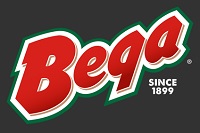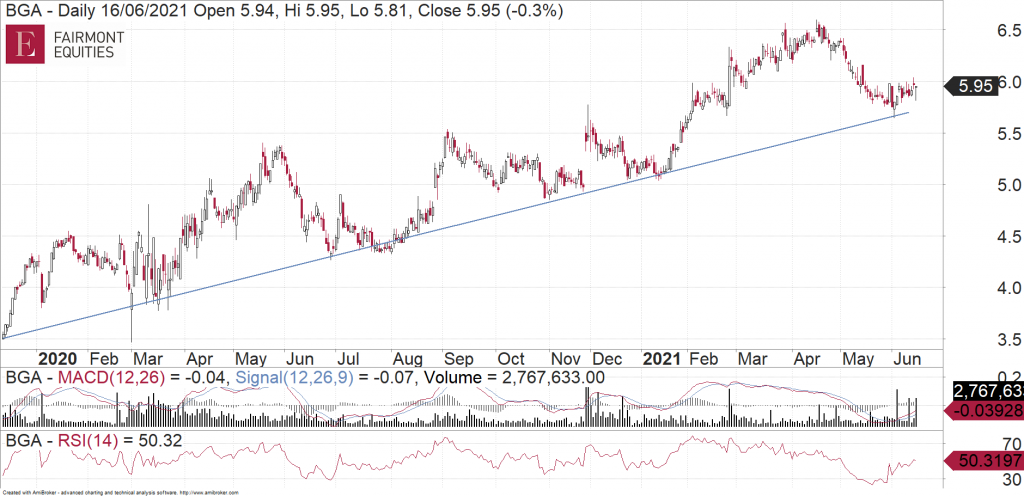We recently researched Bega Cheese (ASX:BGA) to assess the fundamentals in light of a major acquisition (which has doubled BGA’s revenue base) and more favourable trends in macro indicators. With the shares having declined from its recent high, do these factors provide scope for a recovery in the shares?
About Bega Cheese
Bega Cheese is engaged in:
i) The processing, manufacturing and distribution of dairy and associated products to both Australian and international markets, and
ii) The processing and manufacturing of spreads and condiments for consumer markets. BGA operates processing facilities across Australia with the capacity to process ~1.6-1.7 billion litres of milk annually.
In August 2020, BGA changed its business segments to the following categories:
• Branded: the manufacture of bulk ingredients into value added consumer products for internal or external brands;
• Bulk: the manufacture of bulk dairy ingredients, nutritional and bio nutrient products.
Key Fundamental Drivers
Evidence of Increased Operating Leverage
Results for the six months to 31 December 2021 (1H21) showed was evidence of operating leverage, with group EBITDA margin improving from 6.5% in 1H20 to 10.3%. The improvement was driven by:
i. Strong margins in the Bulk segment as the sales mix was weighted to higher-margin products (e.g. more high value nutritional powders and lactoferrin) and
ii. The Company executing well on its cost savings strategy, namely across administration, sales and marketing overheads in 1H21. These cost savings have enabled BGA to operate with a lower cost base over the short term at least.
Operating leverage is expected to be further supported by attractive returns from the recently-commissioned 35 tonne per annum lactoferrin facility at Koroit. The rationale for expansion into lactoferrin is supported by the fact that lactoferrin prices are strengthening on the back of higher levels of demand for Infant Milk Formula from new and existing nutritionals customers.
While lactoferrin spot prices have declined due to excess supply (including additional global capacity), margins and returns from the Koroit facility are likely to be relatively well protected compared to BGA’s Tatura facility, which produces ~16 tonnes per annum of lactoferrin and is more exposed to spot pricing than the Koroit facility, whose capacity is largely underpinned by long-term contracts.
Over the medium term, the acquisition of Lion Dairy & Drinks (discussed in further detail below) has the potential to improve overall margin.
Well Positioned to Navigate Higher Farmgate Milk Prices
For the 2020/21 season, BGA recently announced a step-up in its farmgate milk price given the favourable conditions. This is its first step up in FY21. For its Victorian, south-east South Australian and Bega Valley central suppliers, BGA has increased its farmgate milk price by $0.10 per kilogram of milk solids (kgms) to $6.50/kgms in southern Victoria and SE South Australia, $6.65/kgms in northern Victoria and $7.60/kgms in the Bega Valley.
It is worth noting that while BGA’s farmgate milk price has risen, it is still lower than in FY20 (where there was a sharp increase as a result of the drought placing pressure on milk supply). The price increases are in line with that for BGA’s competitors, with the majority of processors announcing increases of $0.10 per kgms.
Given industry overcapacity, the competition for milk procurement remains fierce in certain regions, however competition in other regions has lessened.
The Company is well positioned to benefit from an improved competitive position at the farmgate in FY22, given that its main commodity exposure (protein pricing through Skim Milk Powder (SMP) at the Koroit and Tatura operations) are rising at a slower rate than that for other dairy ingredients, such as Whole Milk Powder (WMP), cheese and butter. To this end, global dairy prices are rising and are expected to rise further on solid demand (particularly from China) and US$ weakness, although the rising A$ is offsetting most of this impact.
Numerous Strategic Benefits from Major Acquisition
On 25 January 2021, BGA completed the acquisition of Lion Dairy & Drinks (LD&D). LD&D’s core business is the manufacture, marketing, sales and distribution of a number of branded products. Including the first full year of contribution from the LD&D acquisition, the LD&D is expected to account for ~47% of overall sales and ~39% of overall EBITDA in FY22.
LD&D is considered a good strategic fit for BGA, as it diversifies BGA’s dairy exposure, increases scale, and accelerates the shift towards branded products. The significance here is that branded products offer stronger organic growth rates, higher margins and higher returns.
Given LD&D operates in adjacent categories to BGA, the acquisition provides scope for cost synergies through greater efficiencies, with the acquisition expected to be EPS accretive (double digit) in FY22 and FY23.
Post the synergies outlined by BGA, there is potential for LD&D’s EBITDA margin (2.25% according to the acquisition presentation and excluding synergies) to be closer to that for a branded consumer food/drinks business (i.e. ~5%).
Gearing Expected to Reduce
Prior to an ~$400m equity raising towards the end of 1H21 to fund the LD&D acquisition, gearing (on a net debt to EBITDA basis) had reduced from 2.9x to 2.0x, despite the seasonal working capital build, which is typical of the 1st half.
Given that part of the purchase price for the LD&D acquisition was funded by debt, the gearing level is expected to increase above ~2.0x in FY21, but remain below the leverage covenant of 3.0x. Importantly, gearing is expected to fall in FY22/23 to reflect the contribution from the LD&D acquisition and the potential divestment of some non-core LD&D operations.
Fundamental View
At current levels, the shares are trading on a 1-year forward P/E multiple of ~20x, which is not materially higher than recent periods when the Company had a more stretched balance sheet and faced more margin pressure, from higher global dairy prices and increasing farmgate costs.
Further, the current multiple is not demanding in the context of a 3-year EPS growth of ~35% on a CAGR basis over the medium term (FY21-24). The strong overall EPS growth profile underpinned by a near-doubling of EPS in FY22 to reflect the full-year earnings contribution (and synergies) from the LD&D acquisition. The latter is expected to improve BGA’s earnings visibility and growth profile over the medium term.
Charting View
In late January, BGA broke out of an ascending triangle and rallied from about $5.50 to $6.50. It has since eased back and towards the uptrend line. Yesterday’s strong move higher could be sign that good support is coming back in here and BGA is now ready to resume the uptrend. Current levels are therefore a buying opportunity with initial stops to be considered just under the uptrend line.

Michael Gable is managing director of Fairmont Equities.
Current share prices available here.
You can learn more about technical analysis in this article.
An 8-week FREE TRIAL to The Dynamic Investor can be found HERE.
Would you like us to call you when we have a great idea? Check out our services.
Disclaimer: The information in this article is general advice only. Read our full disclaimer HERE.
Like this article? Share it now on Facebook and Twitter!

